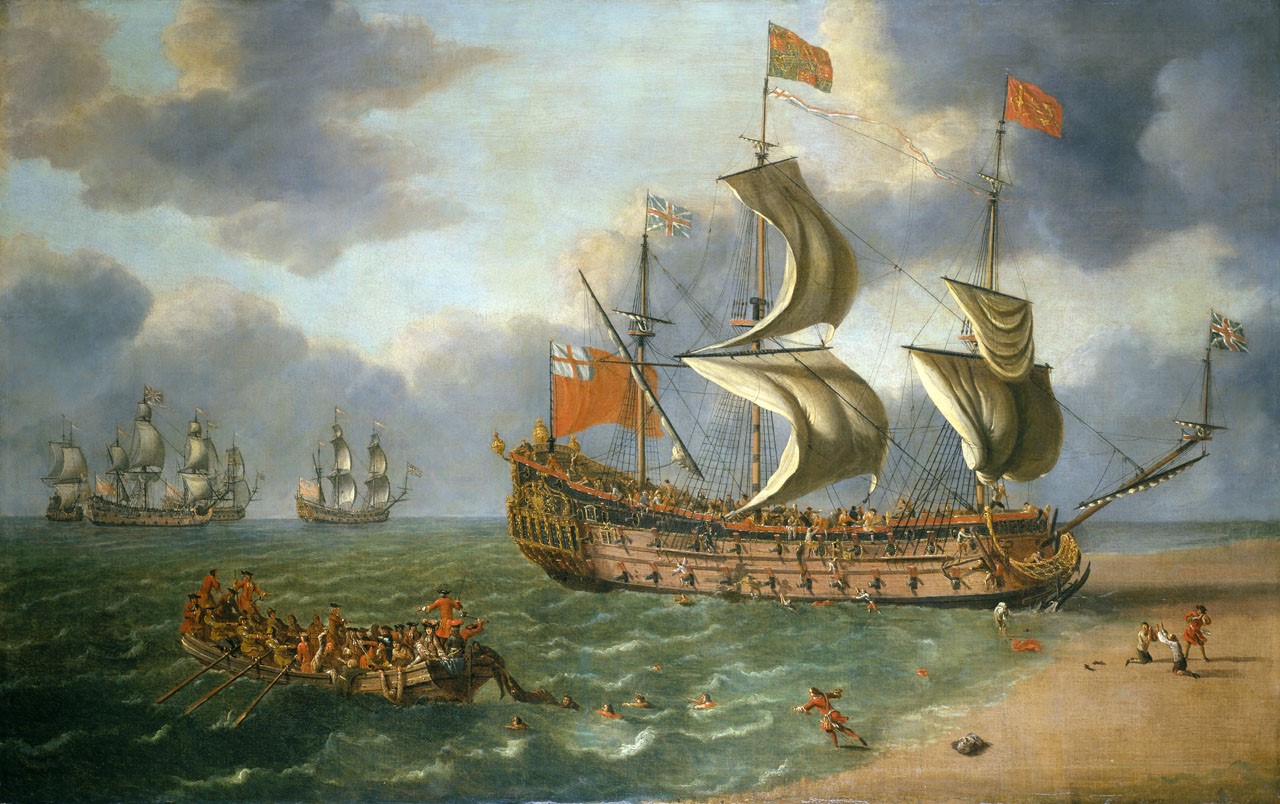Julian and Lincoln Barnwell, joint managing directors of Barnwell Print based in Aylsham, near Norwich, found the wreck site of the Gloucester off the Norfolk coast in 2007 with their late father Michael and two friends.
However, due to the historical importance of their discovery they had to keep it secret until now.
The group searched for four years, covering 5,000 nautical miles, before discovering their quarry – the hunt for which had been partly inspired by the brothers watching the lifting of the Mary Rose on television as children.
“It was our fourth dive season looking for Gloucester,” said Lincoln Barnwell.
“We were starting to believe that we were not going to find her, we’d dived so much and just found sand. On my descent to the seabed the first thing I spotted were large cannon laying on white sand, it was awe- inspiring and really beautiful.”
However, it took another five years for the wreck to be confirmed as the Gloucester after one of the brothers’ discoveries, the ship’s bell, was formally identified.
“We were confident it was the Gloucester, but there are other wreck sites out there with cannons, so it still needed to be confirmed,” said Julian Barnwell.
“There is still a huge amount of knowledge to be gained from the wreck, which will benefit Norfolk and the nation. We hope this discovery and the stories that are uncovered will inform and inspire future generations.”
The UEA's short video on the historic discovery
The Gloucester ran aground on sandbanks less than 30 miles off Great Yarmouth on May 6 1682.
The wreck’s historical importance is due to the fact that when it sank it was carrying James Stuart, Duke of York, who went on to be crowned King James II – the last catholic king of England.
According to professor Claire Jowitt of the University of East Anglia, a world-leading authority on maritime cultural history, had he drowned with the hundreds that lost their lives on the ship, including other significant historical figures, it could have reshaped the history of Britain.
“Because of the circumstances of its sinking, this can be claimed as the single most significant historic maritime discovery since the raising of the Mary Rose in 1982,” she said.
“The discovery promises to fundamentally change understanding of 17th-century social, maritime and political history.”
The Barnwells, who are the fourth generation to run the family print business, which was founded in 1840, are now partnering with Norfolk Museums Service, and academic partner UEA to host a major exhibition at Norwich Castle Museum & Art Gallery.
Norfolk Deputy Lieutenant Lord Dannatt, a former head of the British Army, is supporting the project.
“This is going to be Norfolk’s Mary Rose,” he said.
“Julian and Lincoln have touched history, history that could have changed the course of this nation. It’s such an amazing story to tell. Our aim is to bring that story to life and to share it with as many people as possible.”
The exhibition, which is planned for Spring 2023, will display their finds and share ongoing historical, scientific and archaeological research.
 The Wreck of the Gloucester off Yarmouth, 6 May 1682, by Johan Danckerts, 1682. Credit: Royal Museums Greenwich
The Wreck of the Gloucester off Yarmouth, 6 May 1682, by Johan Danckerts, 1682. Credit: Royal Museums Greenwich










